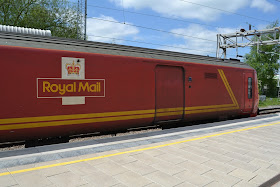As built, the Intercity 125 High Speed Train were originally classified as diesel electric multiple units. They of course had two power cars, one at either end, sandwiching unpowered coaching stock.
Class 253 was used for trains allocated to Western Region and
Class 254 for Eastern Region (the prototype set was classified
Class 252). Later on, the power cars were reclassified as locomotives (because they are) as
Class 43. The DEMU class numbers are still used in some Network Rail documents though the unit numbers are no longer carried except on historical liveries.
 |
| Carrying set number 253 001 under the nose, 43 002 at London Paddington |
| Information for Class 255 |
| Number built: |
12 sets |
| Built: |
1975-82 |
| Builder: |
BR Crewe & Derby |
| Motor: |
2 Paxman 12VP185 or MTU 16V4000 R41R diesels |
| Power: |
(12VP185) 4, 200 hp (3, 130 kW)
(MTU) 4, 500 hp (3, 352 kW) |
Class 255 has been given to GWR's short formed (four coaches instead of seven or eight in a traditional HST) sets which entered service in 2019.
 |
| Class 255 including 43 029 at Newport |
 |
| Preserved power car 43 018 at Crewe Heritage Centre carrying set number 253 009 |
















